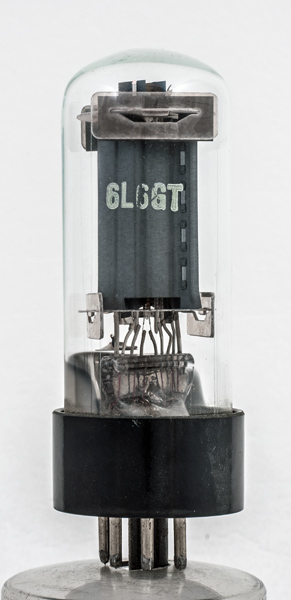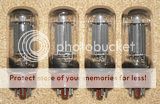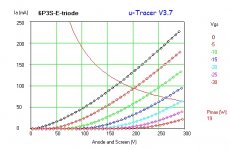Ty_Bower said:
Very similar:
An externally hosted image should be here but it was not working when we last tested it.
I did not mean "Shameless Copy". I know that a bicycle documentation and manufacturing equipment was sold long time ago by Russia to China, so the same could happen with Tubes.
And you have to remember that 6P3S was actually developed in USA by RCA before WW-II. During WW-II Russian tubes had the same names, and only when Khrusshev come to power he demanded to rename all tubes using Cyrillic alphabet for "patriotic reasons".

And you have to remember that 6P3S was actually developed in USA by RCA before WW-II. During WW-II Russian tubes had the same names, and only when Khrusshev come to power he demanded to rename all tubes using Cyrillic alphabet for "patriotic reasons".

Ty_Bower said:---
Besides, at the end of the day, how many different ways are there to build a vacuum tube?
As the Chineese & New Sensor Group have prooved: a 1000 ways of doing it wrong...
Arne K
Hallo everybody,
Sovtek, or better New Censor are selling some very good tubes, my KT88 behave perfect, and those are Sovtek KT88 running in a SIPP amplifier with one tube grid to ground. They stay perfectly balanced over very long time and they sound just wonderful. Not all tubes like to have their grid grounded, the Sovtek KT 88 don't mind. I love those tubes, do I ever need another set of KT88, Sovtek is the way to go. Same applies for their ECC83 alias 12AX7, not too bad at all. Please don't buy a Russian car, there comes misery from, but they sure make good tubes.
Kind regards from Holland
Sovtek, or better New Censor are selling some very good tubes, my KT88 behave perfect, and those are Sovtek KT88 running in a SIPP amplifier with one tube grid to ground. They stay perfectly balanced over very long time and they sound just wonderful. Not all tubes like to have their grid grounded, the Sovtek KT 88 don't mind. I love those tubes, do I ever need another set of KT88, Sovtek is the way to go. Same applies for their ECC83 alias 12AX7, not too bad at all. Please don't buy a Russian car, there comes misery from, but they sure make good tubes.
Kind regards from Holland
data sheet for6p3s-e
I find that : 6P3S, 6P3S-E
if you cannot see ,send me an email : milk2oad@yahoo.com

I find that : 6P3S, 6P3S-E
if you cannot see ,send me an email : milk2oad@yahoo.com
An externally hosted image should be here but it was not working when we last tested it.
I have a bunch of these. Are they any good ?

Thanks for the datasheet!
I'd like to mount a pair of 6p3s-e horizontally. Does anyone know if this can be done and if so how should I orient the tube so that the filament doesn't sag and short to other elements?
Yes, in the communications equipment I used to service they were mounted horizontally
Because I can't read the datasheet, does anyone have the corresponding Vademecum sheet with a proper triode-connected curve?
I am running the 6P3S in triode mode push pull at 340 volt Vb and a cathode bias (resistor of 470 ohm) at 30 volt.
Wa = 20 watt. Filament is 6.3v ac. From decrypting the datasheet shown earlier in the topic, there is only mention of 250 V.
I had the amplifier running at a lower Vb of 320 volt for a few years; the tubes really kept well all that time. So above 250 v is possible on the long run.
I am running the 6P3S in triode mode push pull at 340 volt Vb and a cathode bias (resistor of 470 ohm) at 30 volt.
Wa = 20 watt. Filament is 6.3v ac. From decrypting the datasheet shown earlier in the topic, there is only mention of 250 V.
I had the amplifier running at a lower Vb of 320 volt for a few years; the tubes really kept well all that time. So above 250 v is possible on the long run.
Last edited:
Because I can't read the datasheet, does anyone have the corresponding Vademecum sheet with a proper curve?
I am running the 6P3S in triode mode push pull at 340 volt Vb and a cathode bias (resistor of 470 ohm) at 30 volt.
Wa = 20 watt. Filament is 6.3v ac. From decrypting the datasheet shown earlier in the topic, there is only mention of 250 V.
I had the amplifier running at a lower Vb of 320 volt for a few years; the tubes really kept well all that time. So above 250 v is possible on the long run.
I am running the 6P3S in triode mode push pull at 340 volt Vb and a cathode bias (resistor of 470 ohm) at 30 volt.
Wa = 20 watt. Filament is 6.3v ac. From decrypting the datasheet shown earlier in the topic, there is only mention of 250 V.
I had the amplifier running at a lower Vb of 320 volt for a few years; the tubes really kept well all that time. So above 250 v is possible on the long run.
Thanks rotaspec.
So I am maybe underrating the tube in mA (35 mA) and overrating it in voltage. I recalculated the Wa, it is 10 watt. So nothing to worry about in my opinion.
In class AB it can be higher.
The second grid sees more than in the specsheet for pentode use, but there is no triode data in this sheet.
For other pentodes, like 5881, triode operating data is given. The 5881 allows the screen of the triode strapped tube to be operated above the normal operating voltage of the anode (400V). Looking at the triode 5881 sheet, the triode operating point in class AB1, push-pull, like I have of 310Va, -30Vg, 33 mA, is exactly found here. I can surely go a little bit higher I guess.
View attachment 5881 tungsol.pdf
Interesting. [There are more resembances between tubes than I thought, if one disregards the high power region.]
This application of the 6p3s is for replacing the original 5881 tubes in a Yaqin push-pull amplifier.
So I am maybe underrating the tube in mA (35 mA) and overrating it in voltage. I recalculated the Wa, it is 10 watt. So nothing to worry about in my opinion.
In class AB it can be higher.
The second grid sees more than in the specsheet for pentode use, but there is no triode data in this sheet.
For other pentodes, like 5881, triode operating data is given. The 5881 allows the screen of the triode strapped tube to be operated above the normal operating voltage of the anode (400V). Looking at the triode 5881 sheet, the triode operating point in class AB1, push-pull, like I have of 310Va, -30Vg, 33 mA, is exactly found here. I can surely go a little bit higher I guess.
View attachment 5881 tungsol.pdf
Interesting. [There are more resembances between tubes than I thought, if one disregards the high power region.]
This application of the 6p3s is for replacing the original 5881 tubes in a Yaqin push-pull amplifier.
I have just been assembling a Dynaco ST-70 clone, which is normally running EL34 outputs in ultra-linear.
Initial testing was done with 6P3S tubes instead, as I didn't want to risk my NOS Mullard EL34s. Bias was set to give 40mA cathode current, and the B+ settled at 430v, giving 420v across the tubes, and similar on the G2.
Close to 18W dissipation and they were quite happy, so your figures are conservative by comparison.
I ran the amp like that for several hours with no adverse effect on the tubes (no red plates even in the dark).
My experience with Russian 6P3S tubes so far indicates that the later production ones, and also the 6P3S-E will operate above their data sheet ratings with ease. The earlier ST-shaped bottle ones (and the Chinese clones) are not so forgiving.
Here's a triode trace I did:
Gary
Initial testing was done with 6P3S tubes instead, as I didn't want to risk my NOS Mullard EL34s. Bias was set to give 40mA cathode current, and the B+ settled at 430v, giving 420v across the tubes, and similar on the G2.
Close to 18W dissipation and they were quite happy, so your figures are conservative by comparison.
I ran the amp like that for several hours with no adverse effect on the tubes (no red plates even in the dark).
My experience with Russian 6P3S tubes so far indicates that the later production ones, and also the 6P3S-E will operate above their data sheet ratings with ease. The earlier ST-shaped bottle ones (and the Chinese clones) are not so forgiving.
Here's a triode trace I did:
Gary
Attachments
Another element of praise for this Russian tube is build consistency. On my (ex-military) tube tester, the four I bought were 2200, 2100, 2100, 2100.
In comparison the chinese 5881 were 1650, 1700, 1750, 1600. So more all over the place. And they became black within two years, running at 80 mA in UL-PP.
At my low operating point the sound is quite relaxed. The Yaqin has almost no overshoot.
I have tried reducing the filament voltage: that also makes a more relaxed sound.
In comparison the chinese 5881 were 1650, 1700, 1750, 1600. So more all over the place. And they became black within two years, running at 80 mA in UL-PP.
At my low operating point the sound is quite relaxed. The Yaqin has almost no overshoot.
I have tried reducing the filament voltage: that also makes a more relaxed sound.
- Status
- This old topic is closed. If you want to reopen this topic, contact a moderator using the "Report Post" button.
- Home
- Amplifiers
- Tubes / Valves
- Datasheet for Russian 6p3s-e


